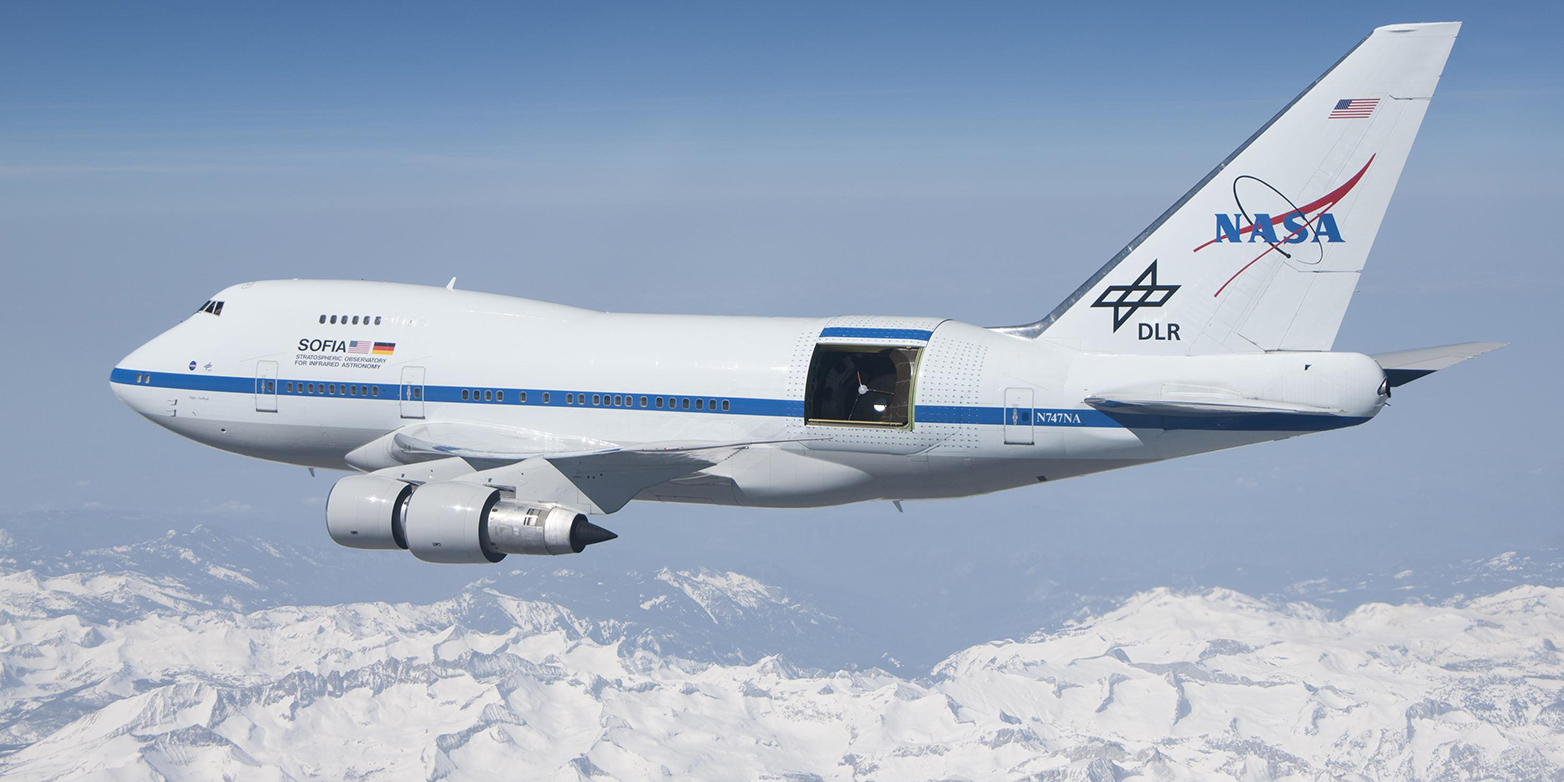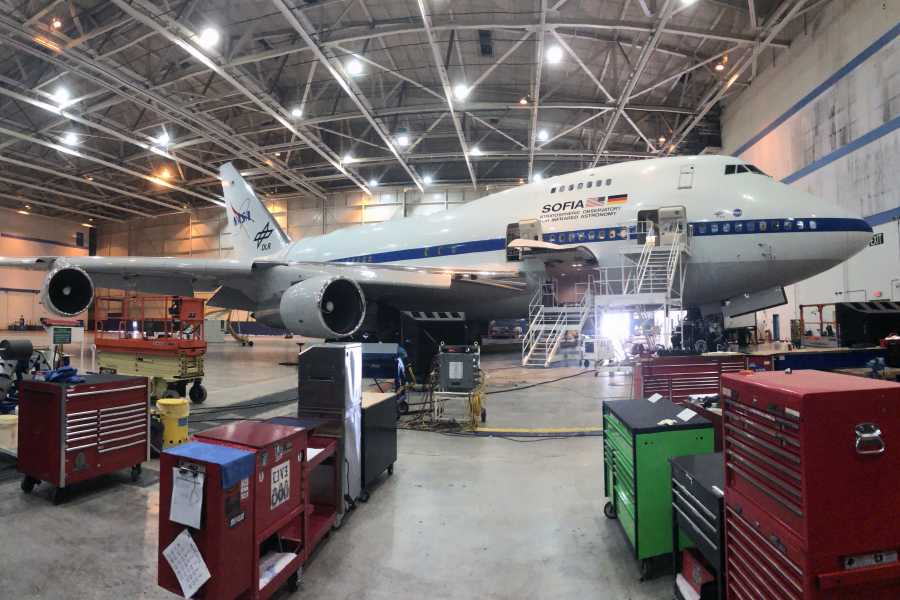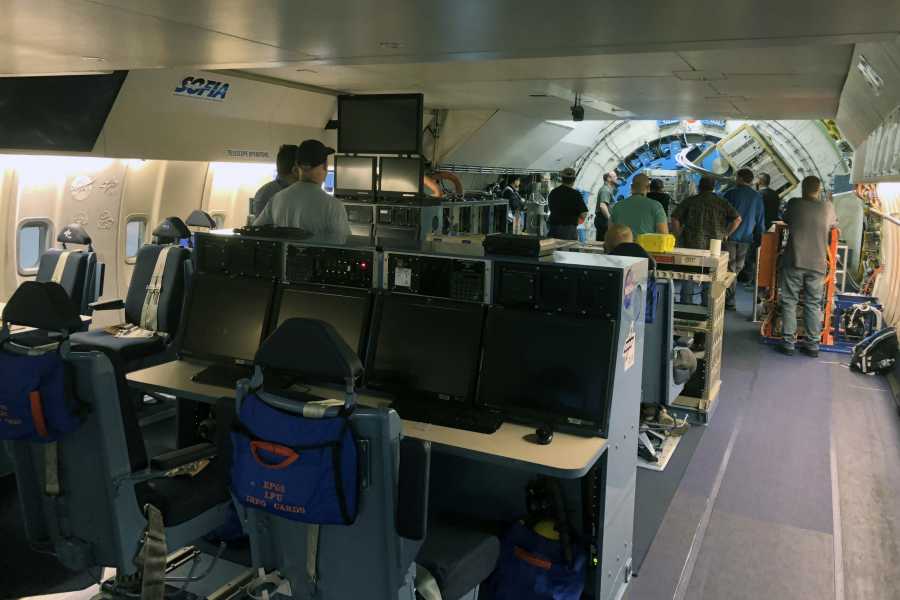From a quantum laboratory to the stratosphere
ETH physicists have developed a quantum cascade laser that can be used to visualise weak infrared signals from space. It is now being put to use on a flight of the world’s largest airborne observatory.
Lorenzo Bosco, doctoral student with Jérôme Faist, a professor at the Institute for Quantum Electronics, is taking an unusual flight: he travels to the stratosphere in a special NASA aircraft, a converted Boeing 747SP, to contribute to astrophysical measurements. The crew of the Stratospheric Observatory for Infrared Astronomy (SOFIA), as the aircraft is officially named, measured infrared signals from cooling gases. The astrophysicists hope to thereby gain new insights into how stars form in our galaxy.
Additional device makes signals visible
Although Faist’s research is focused on futuristic quantum-optical systems rather than stars, his involvement in the astrophysics mission is for a good reason: together with his team, he has developed a special laser that makes these measurements possible in the first place. The infrared signals that will be measured on this flight are so weak that they can only be measured using a trick.
The frequency of the incident light is changed using a local oscillator, so that it can be better distinguished from the background noise. This principle is also used in fields such as telecommunications, to improve the reception of radio broadcasts. Since the astrophysicists wanted to measure signals in the far infrared range on this flight, they needed to use a laser that provides a corresponding additional signal in the terahertz region as a local oscillator.
Practical application for an innovative device
This is just what the quantum cascade lasers that Faist and his group have been developing for several years are able to do. Although the principle of these lasers was first implemented in the 1990s, those operating in the terahertz range have so far hardly been applied. One reason for this is that they have to be cooled down to very low temperatures during operation.
For the current SOFIA mission, Faist and his team developed a quantum cascade laser specifically tailored to the astrophysicists’ requirements. “The challenge was to develop a device that provides a precise and powerful signal with a clearly definable frequency,” explains Faist. He is very satisfied that this laser concept now has a practical application after so many years of development.
The ETH professor hopes that the mission will also provide indications of how they can continue to improve the laser so that the astrophysicists can conduct further infrared measurements with higher resolutions on their flights.




Comments
No comments yet